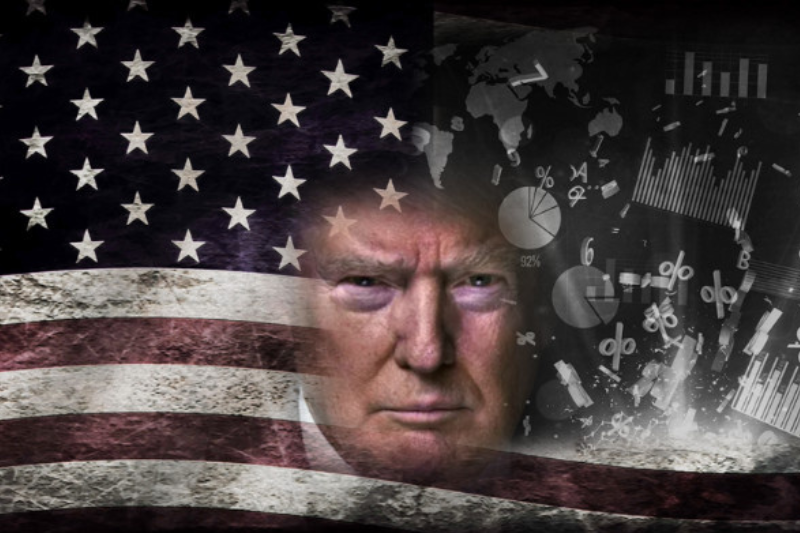
Trump Doctrine 2.0: A Closer Look at Foreign Policy Evolution
Trump’s Strategic Moves: Reshaping U.S. Foreign Policy on China, NATO, and Ukraine
In the realm of U.S. foreign policy, Donald Trump’s potential return to the presidency looms large, promising a recalibration that could significantly alter the nation’s stance on critical global issues. Examining the intricacies of his strategic moves reveals a vision that extends beyond traditional paradigms, impacting areas ranging from the Ukraine conflict to trade dynamics with China and the functioning of key federal institutions.
Loyalty Over Legacy
Trump’s second term, if realized, could witness a strategic overhaul in key governmental departments. The prospect of installing loyalists in pivotal positions within the Pentagon, State Department, and CIA is not merely a personnel shift but a calculated move to fortify Trump’s influence. In his initial presidency, Trump faced challenges in materializing his impulsive visions due to bureaucratic resistance. The realization that “personnel is policy,” as noted by Robert O’Brien, his former national security adviser, underscores the importance of loyalists aligning with Trump’s agenda.
Trump’s Foreign Policy Wish List
1. Swift Implementation: Trump’s reliance on loyalists aims to expedite the execution of his foreign policy priorities. A streamlined approach could facilitate proposed actions, such as deploying U.S. Special Forces against Mexican cartels, a move likely to face opposition.
2. Defense Aid Reallocation: If back in office, Trump could promptly cut defense aid to Europe, signaling a shift in longstanding alliances. Simultaneously, economic ties with China may face further reductions as part of a broader isolationist strategy.
3. Trade Tariffs on NATO: O’Brien suggests the possibility of imposing trade tariffs on NATO countries not meeting defense spending commitments. This underscores Trump’s intent to wield economic leverage to enforce strategic objectives.
Trump’s Playbook for Reshaping Global Dynamics
Unlike his 2016 election journey, Trump has cultivated a group of advisers with significant foreign policy experience and personal trust. Individuals like John Ratcliffe, Richard Grenell, and Kash Patel form a stable inner circle, offering Trump a network of trusted voices echoing his skepticism towards NATO and concerns about financial commitments to Ukraine.
Prospective Trump Administration Measures
1. Rogue Actor Purge: Beyond the top echelons, a prospective Trump administration could target lower-level actors within the national security community perceived as “rogue.” This unprecedented step could reshape the non-partisan bureaucracy.
2. Executive Order Reinstatement: Trump’s intent to reinstate an executive order facilitating the dismissal of civil servants underscores his commitment to personnel changes. The “Truth and Reconciliation Commission” proposed by Trump indicates a broader plan to address perceived abuses of power.
Keep Reading
3. Systematic Checks on Intelligence: A proposed “auditing” body to monitor intelligence gathering in real-time suggests a comprehensive effort to reshape the State Department, Pentagon, and National Security Establishment.
Global Implications
As Trump maintains a lead in the Republican presidential nomination race, foreign capitals grapple with the uncertainty surrounding a potential second term. European diplomats express concerns about the future of NATO commitments and fear a reduction in aid to Ukraine amid its conflict with Russia.
Diplomatic Preparations and Speculations
1. Doubts About NATO Commitments: European diplomats voice doubts about Trump honoring Washington’s commitment to defend NATO allies. The fear of a potential pullout looms large, posing significant challenges for nations dependent on NATO’s collective security guarantee.
2. Ukraine’s Dilemma: Concerns persist about Trump’s commitment to supporting Ukraine in its conflict with Russia. Diplomats outline potential “doomsday options” in diplomatic cables, envisioning scenarios where Trump weakens America’s system of checks and balances.
The Road Ahead
Trump’s pledge to reshape foreign policy priorities, such as ending China’s most favored trading nation status, increasing European defense spending, and potentially withdrawing from NATO, outlines a distinct trajectory. Whether these proposals align with America’s global interests or lead to a retreat from globalism remains a subject of intense speculation.
Trump’s Vague U.S. Foreign Policy Landscape
1. Trade War with China: A second term would likely witness Trump fulfilling promises to end China’s favored trading status, introducing a new phase in U.S.-China economic relations.
2. NATO’s Future: The question of NATO’s future lingers, with some speculating a potential withdrawal. Trump’s insistence on increased defense spending from NATO allies creates a scenario where longstanding alliances face reevaluation.
3. Ukraine’s Strategic Importance: Trump’s broad claims of ending the Ukraine war within 24 hours raise questions about the feasibility and potential consequences of such an ambitious timeline.
As the political landscape evolves, Trump’s potential return to power introduces a complex tapestry of strategic moves that could redefine U.S. foreign policy dynamics. Navigating through uncertain diplomatic waters, the global community remains on edge, anticipating the unfolding of a geopolitical saga that could reshape international relations. Trump’s intentions, while veiled in campaign promises, hold the potential to reshape global alliances and redefine America’s role on the world stage.




